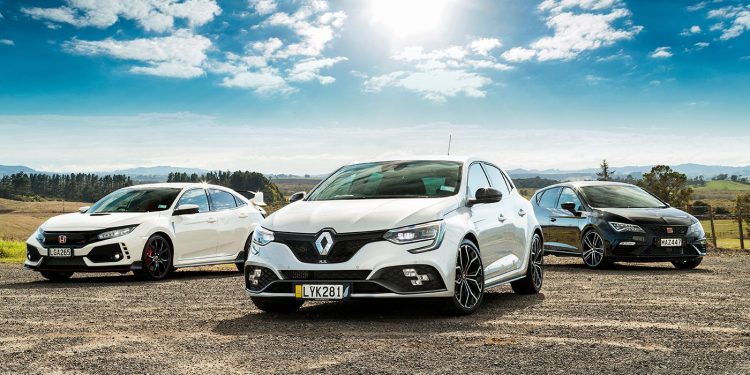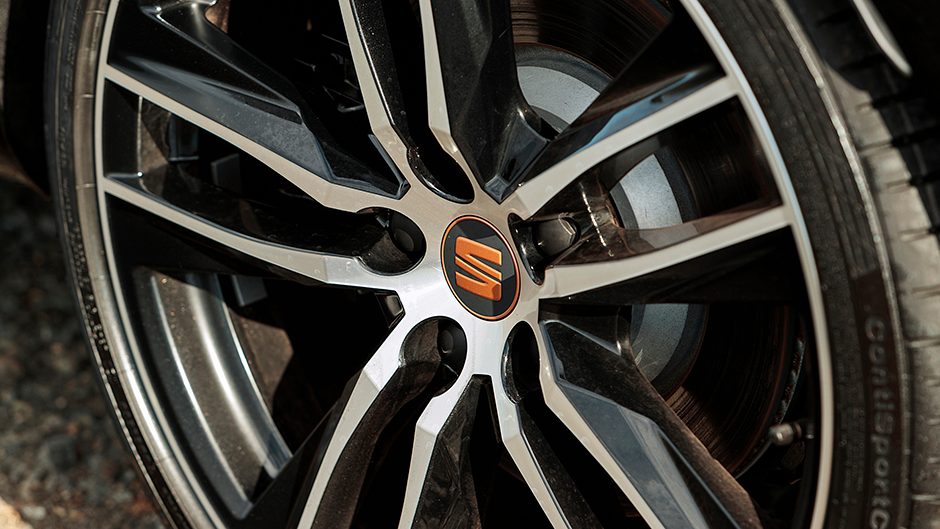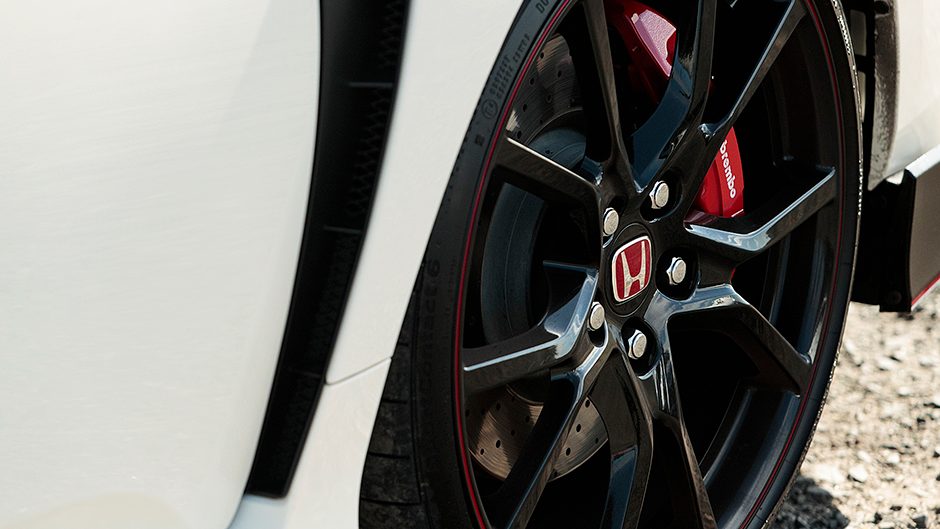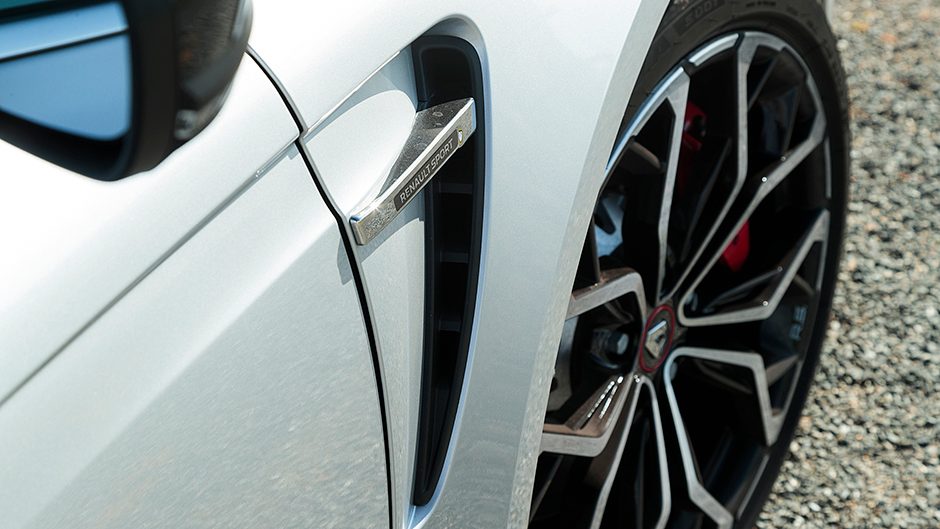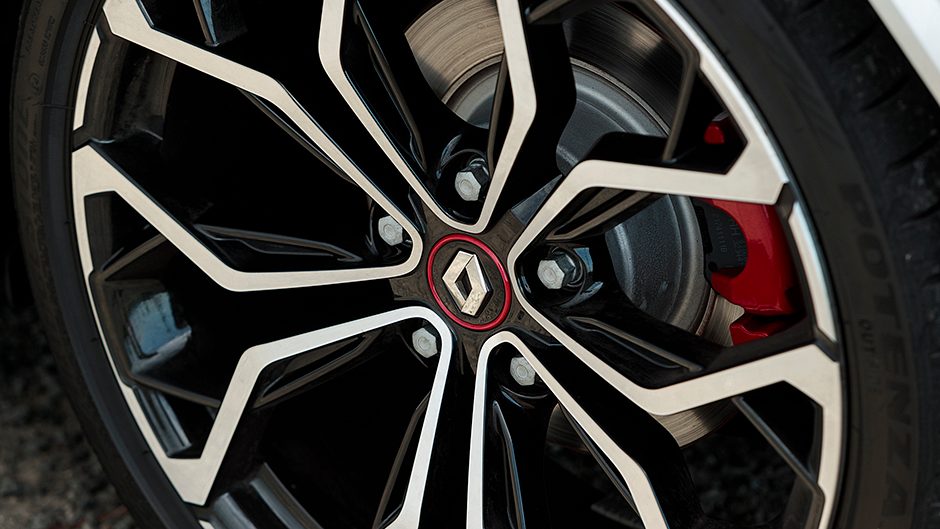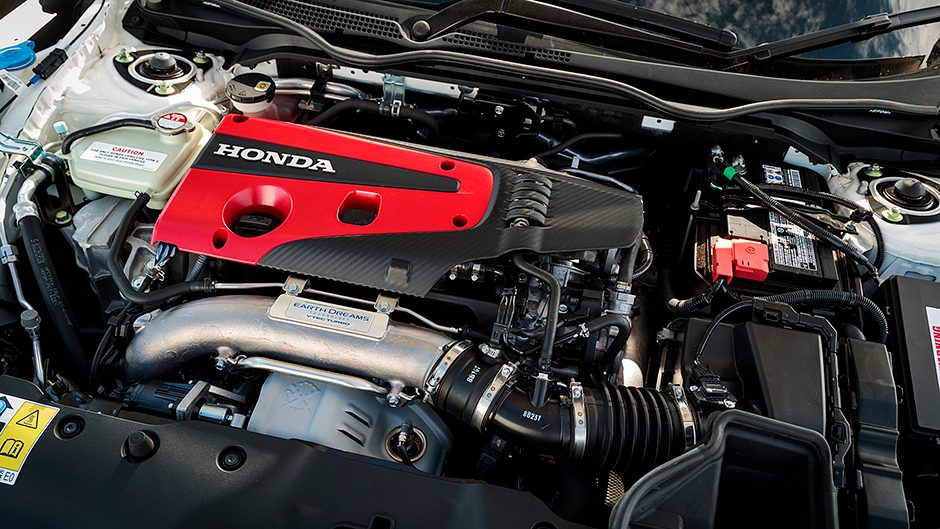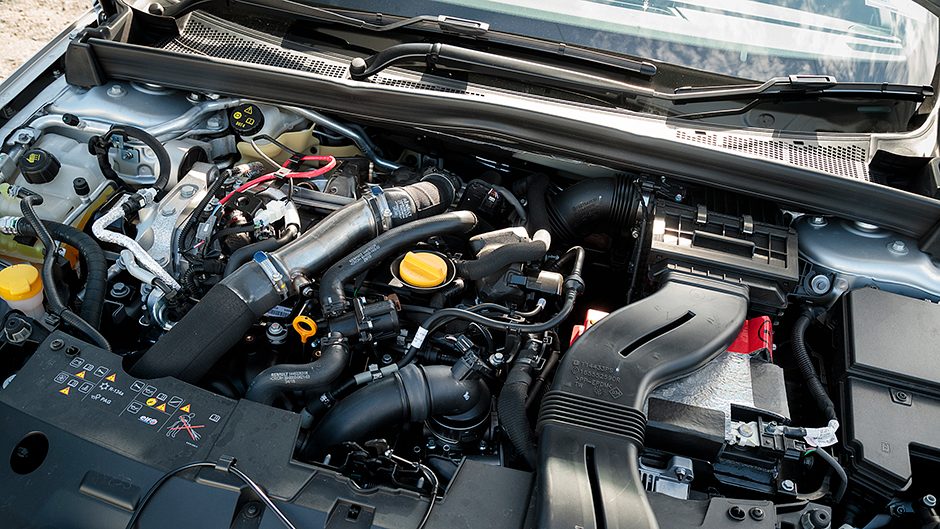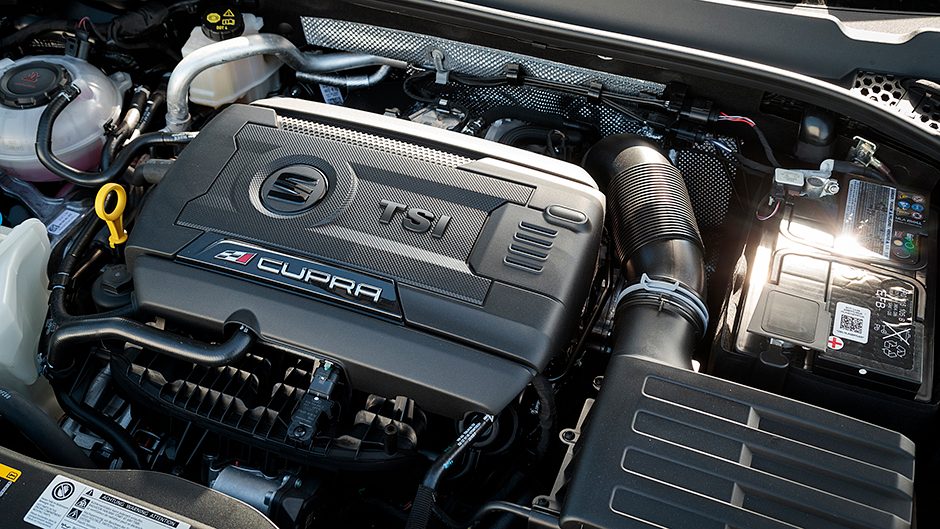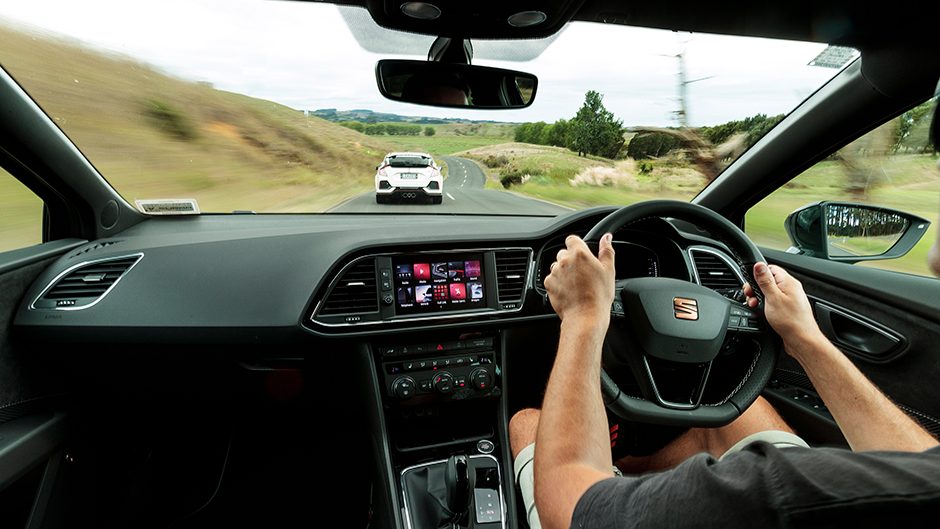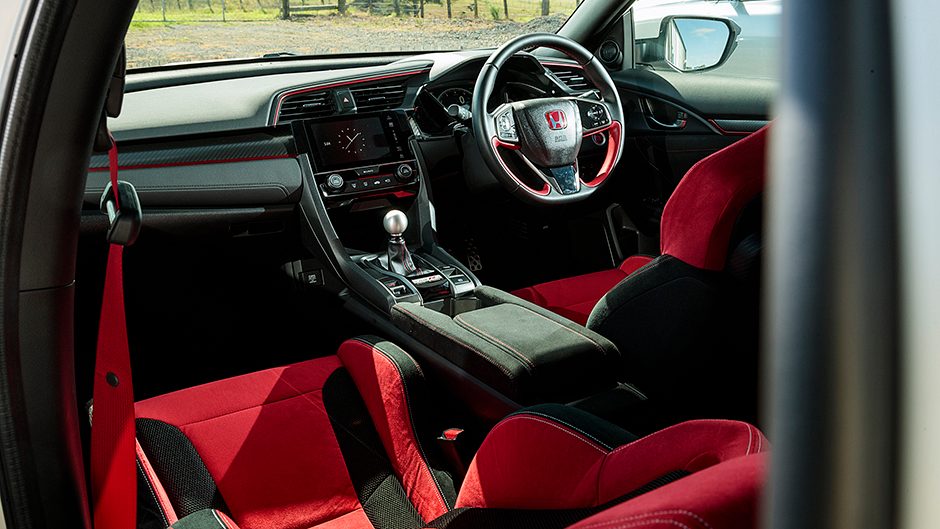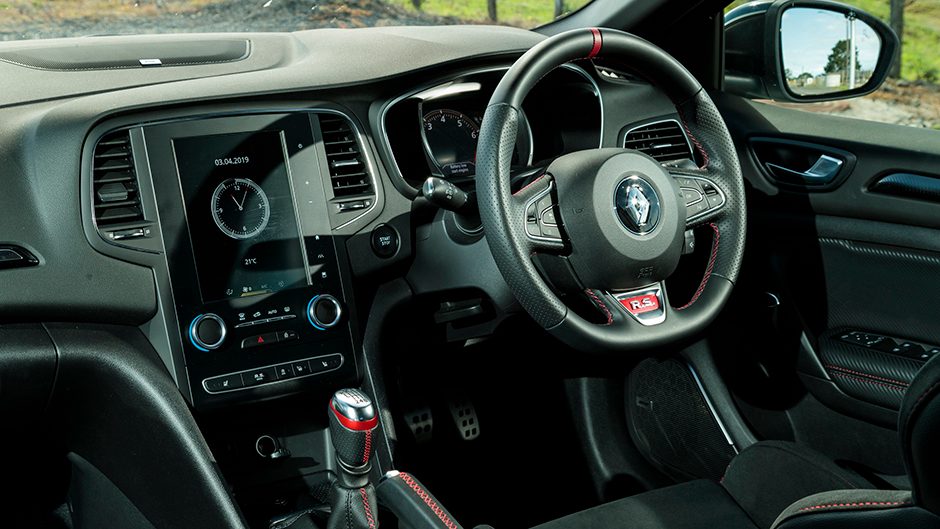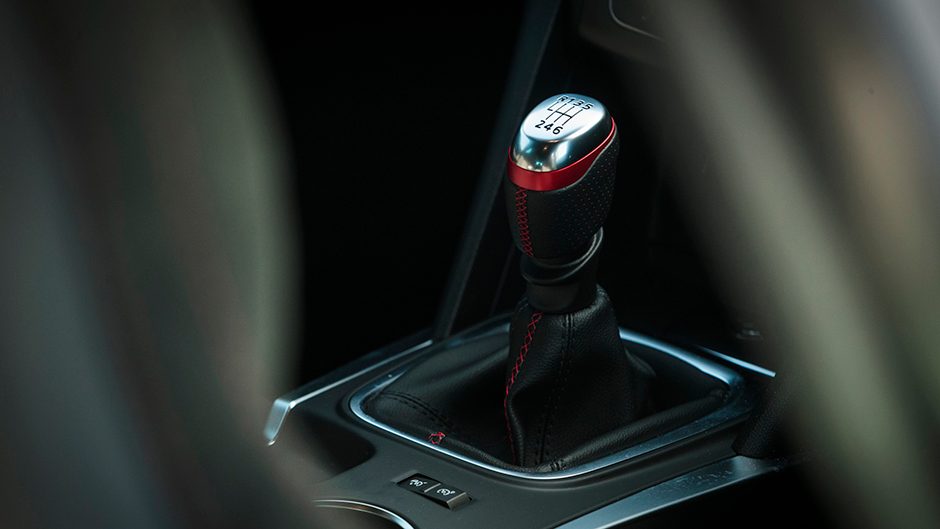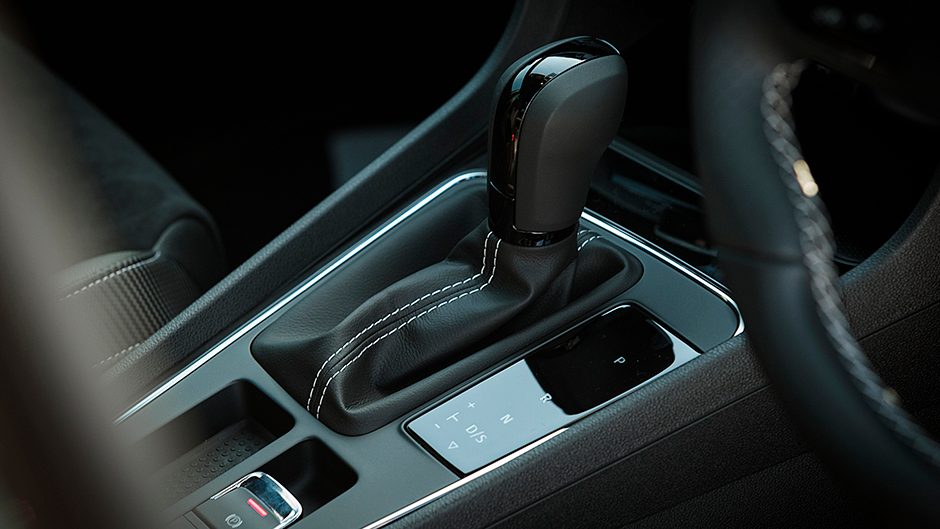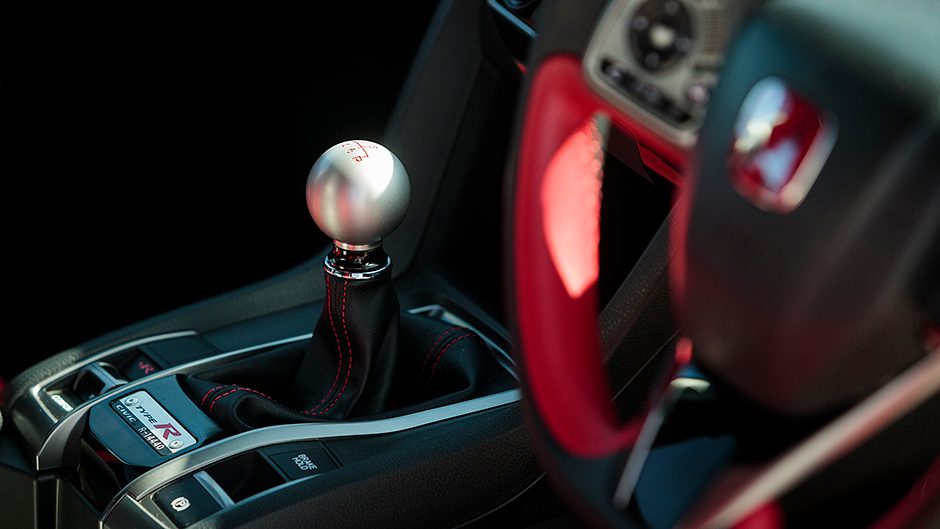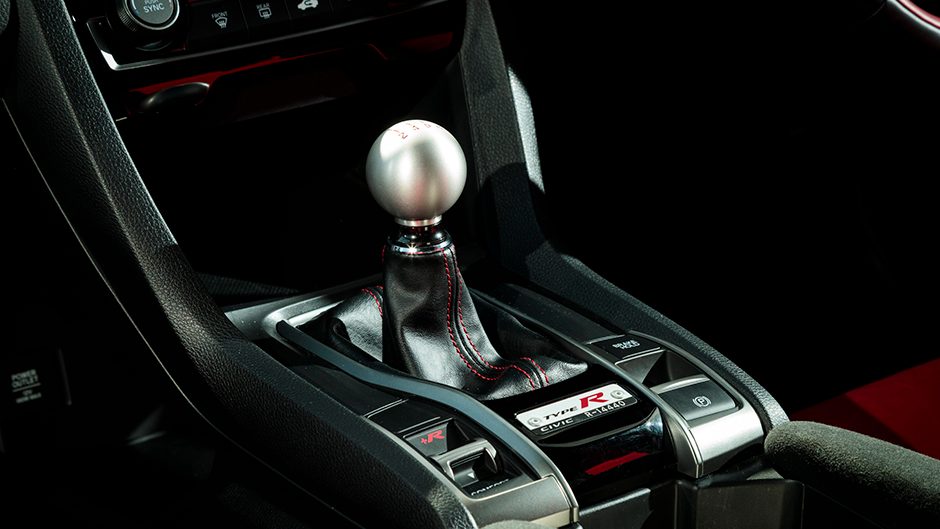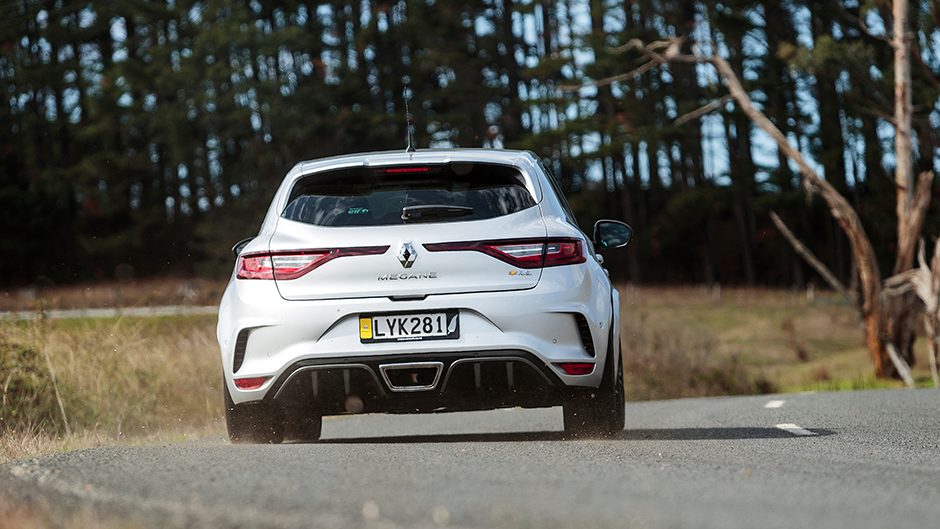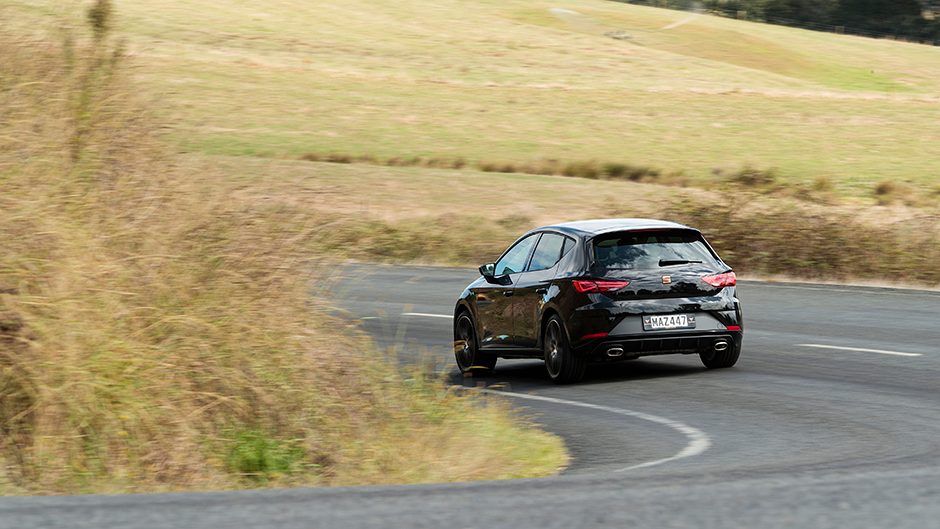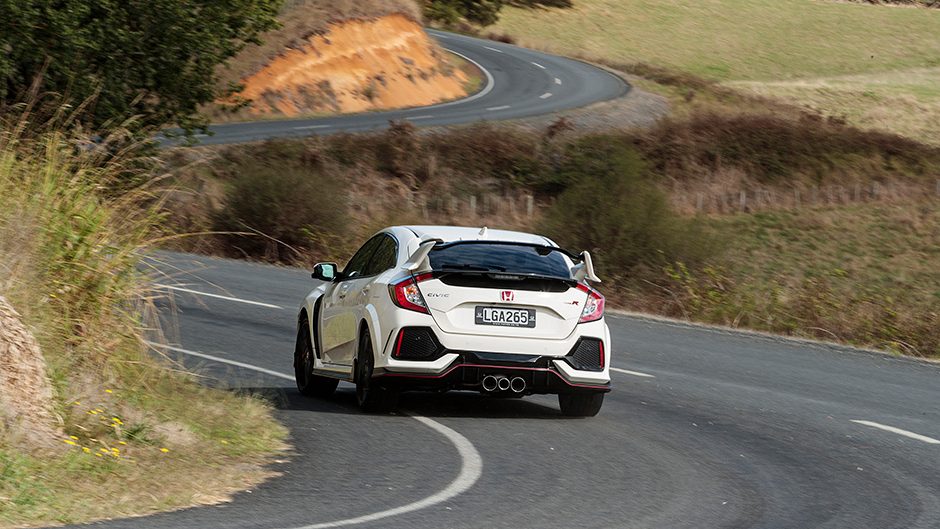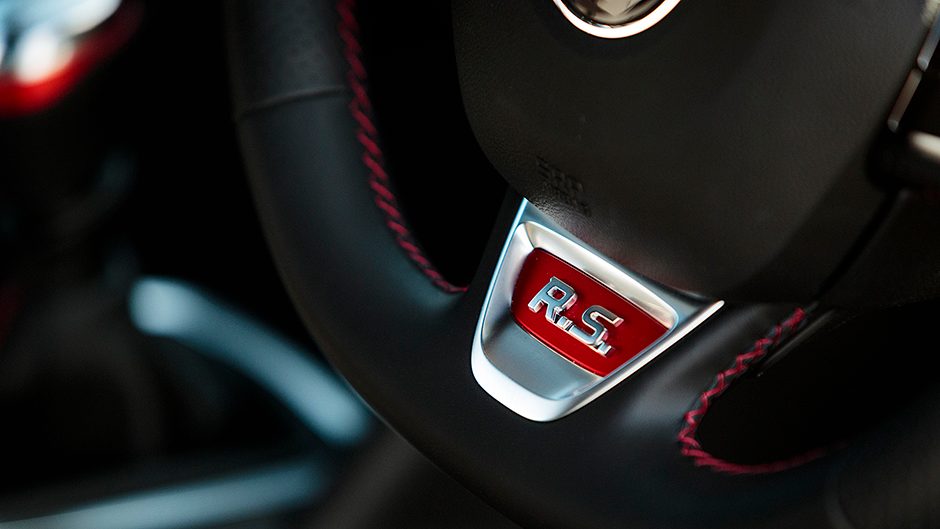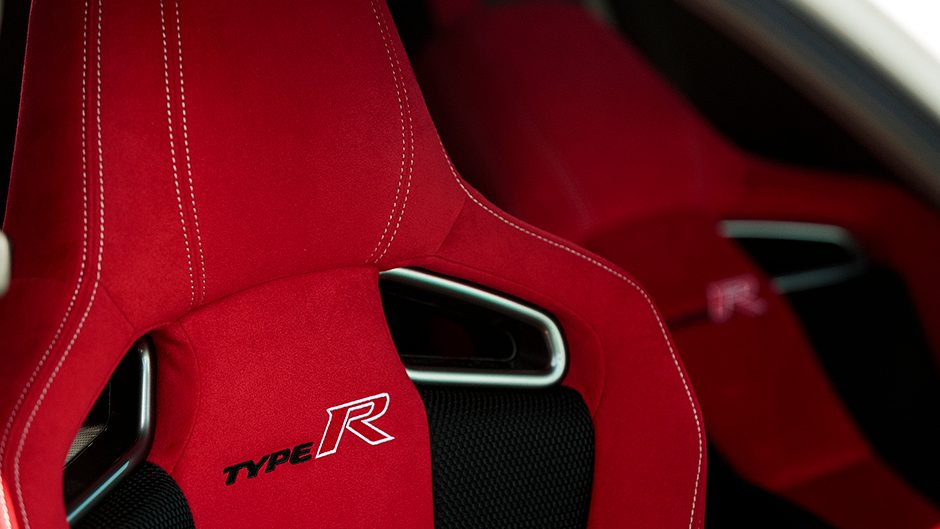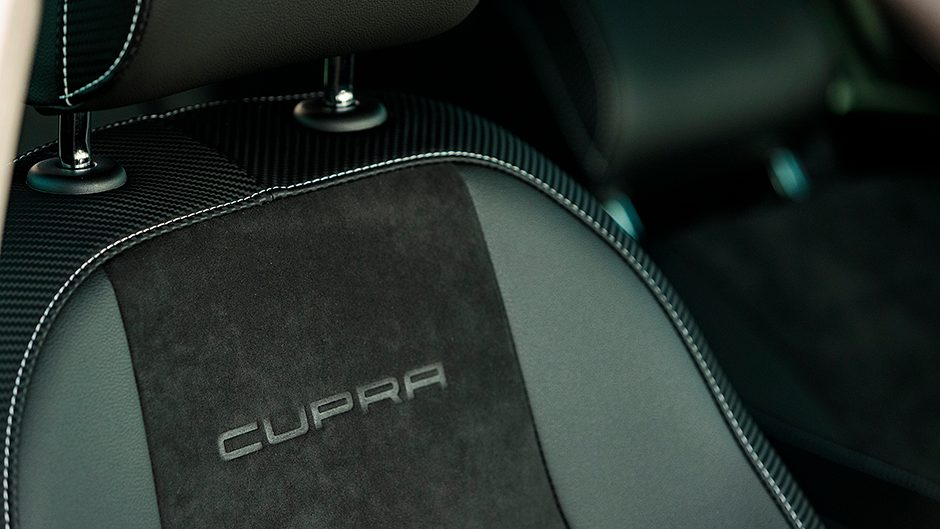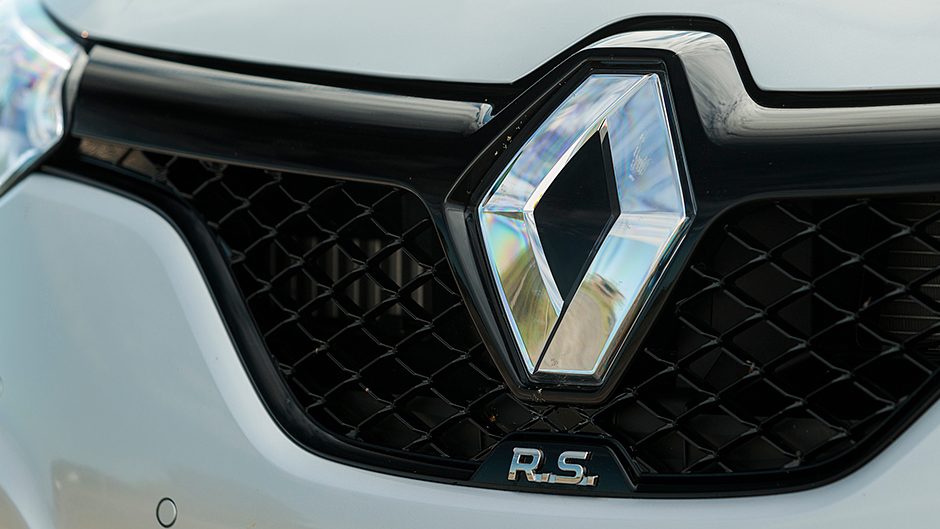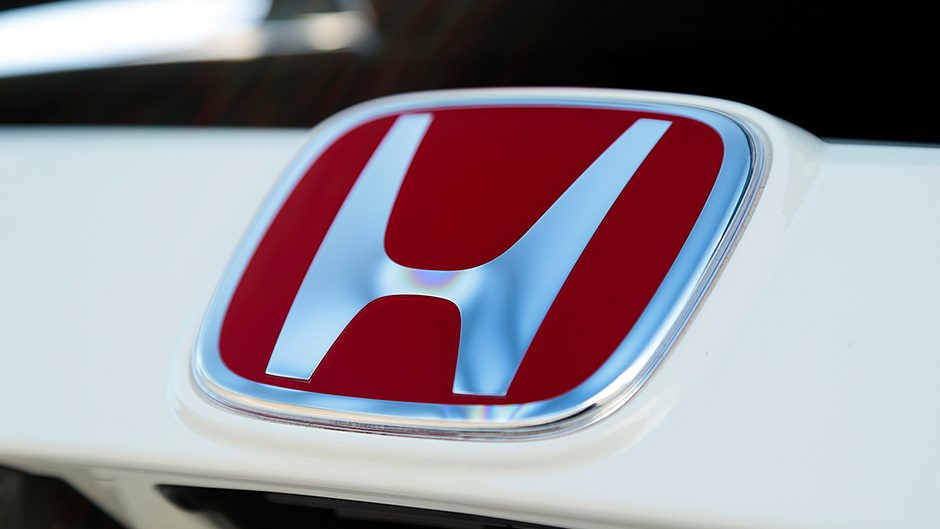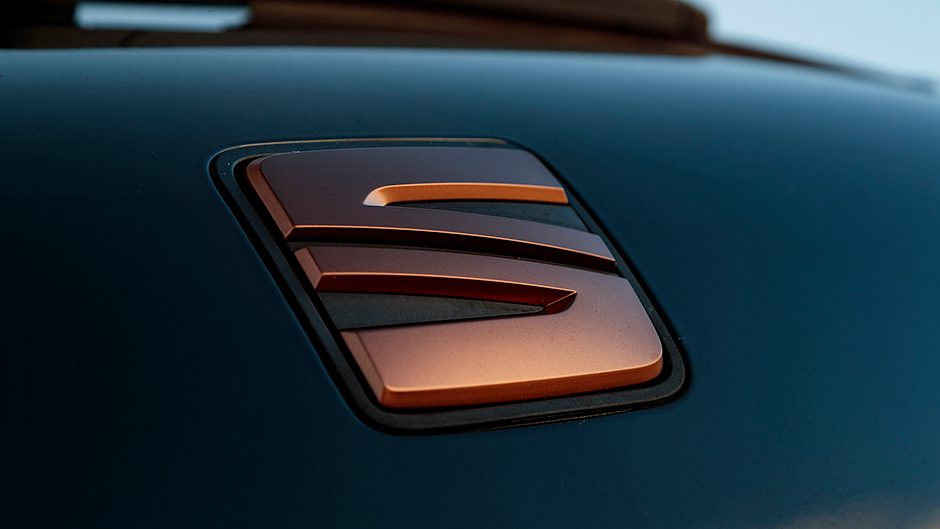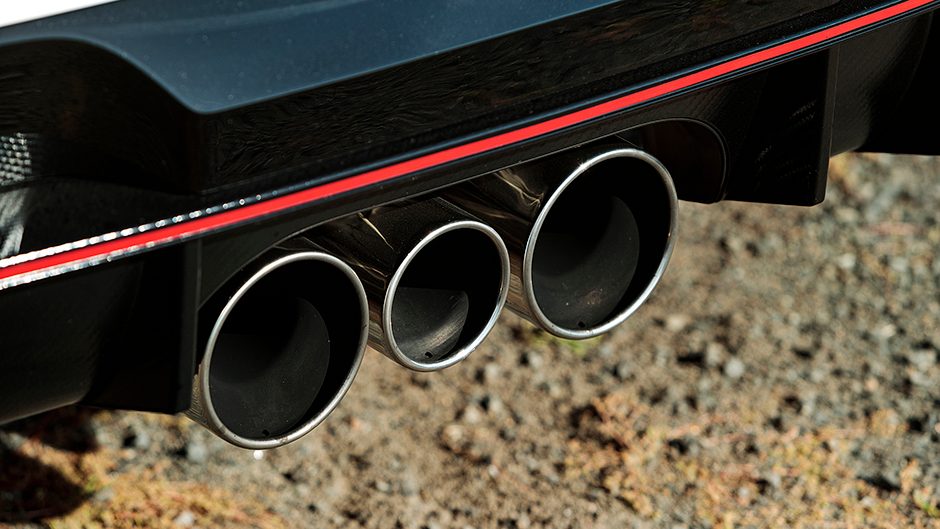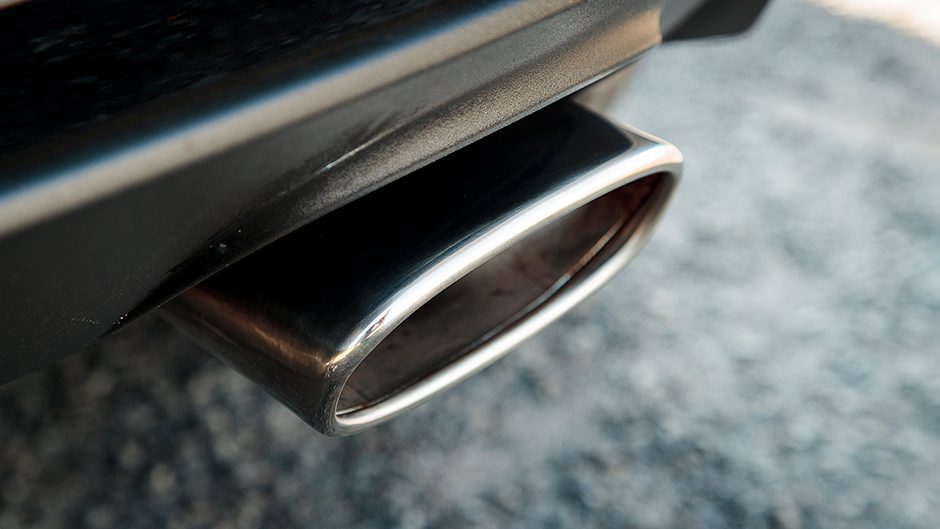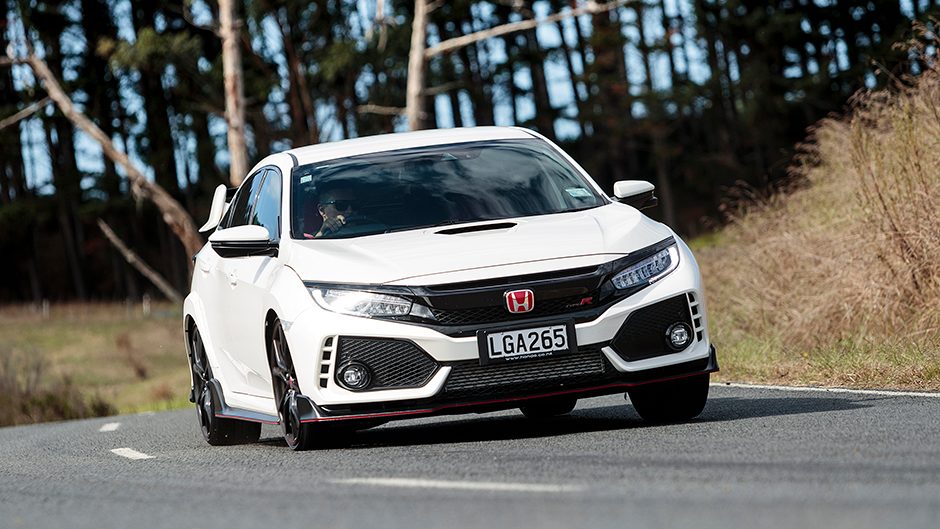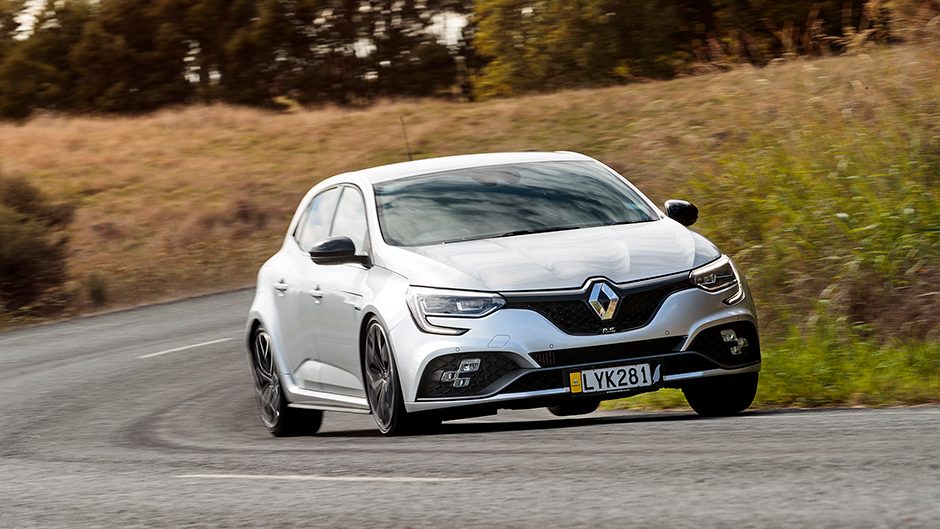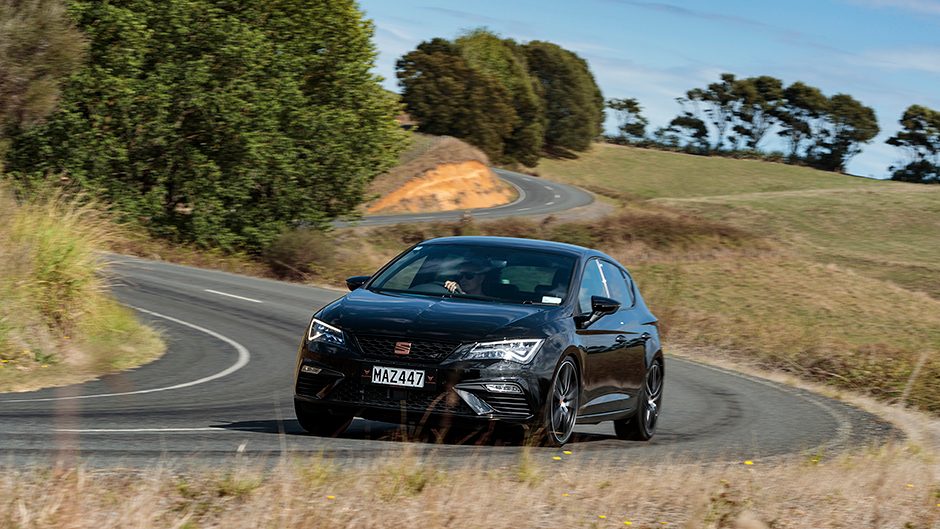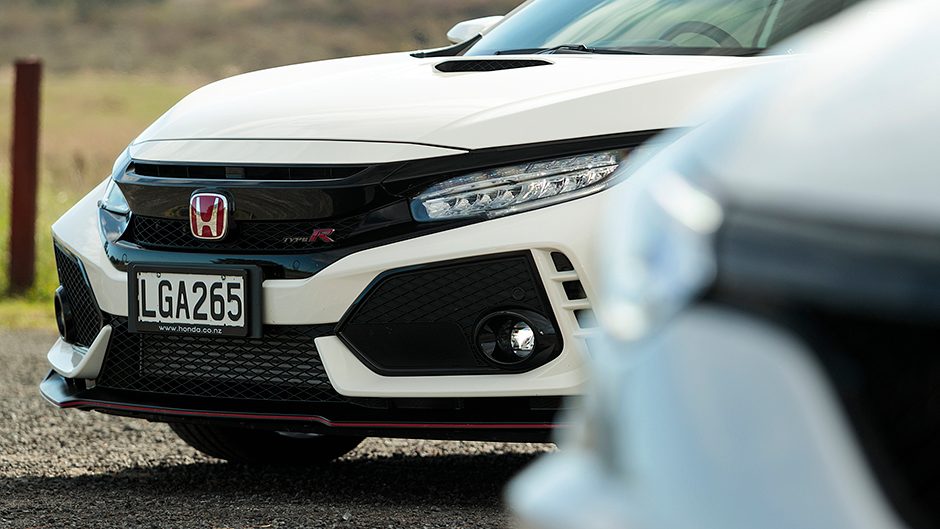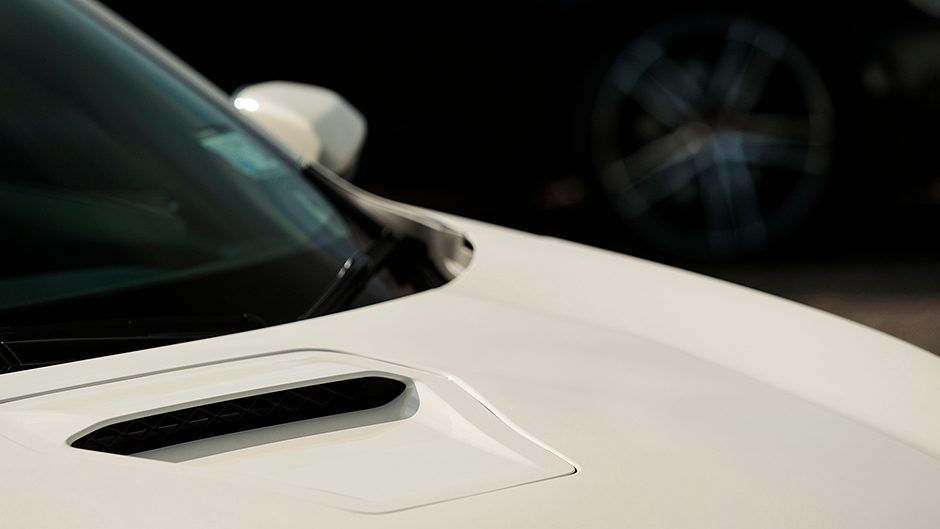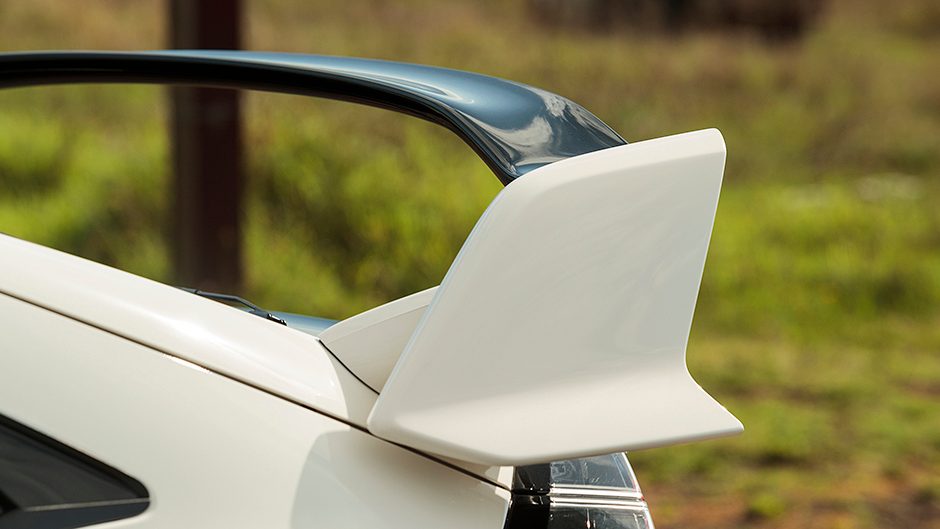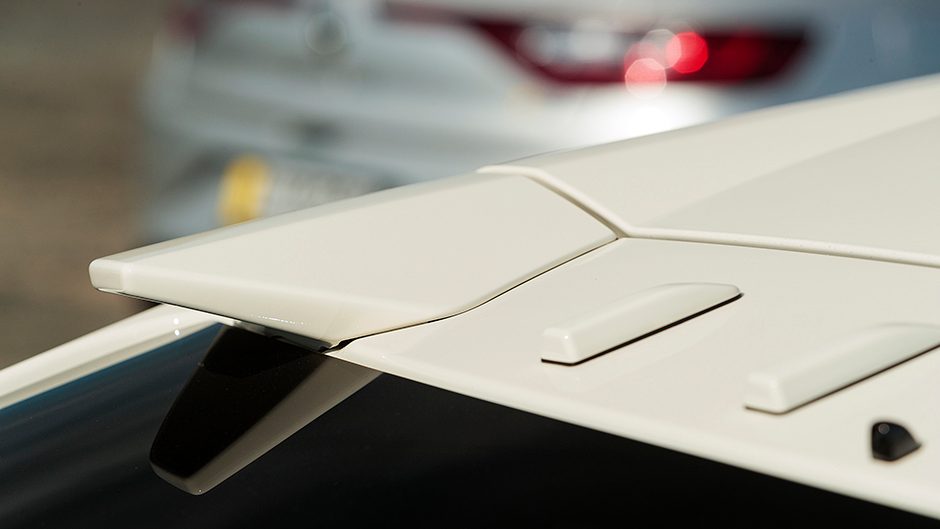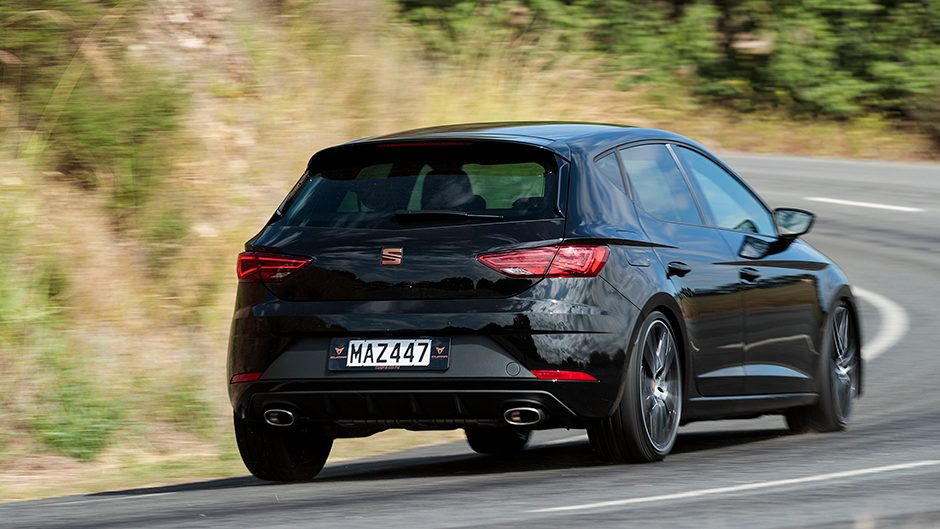2018 Honda Civic Type R vs Renault Megane RS vs Seat Leon Cupra comparison
Words Kyle Cassidy | Photos Tom Gasnier
Some disdainfully refer to hatches as mere shopping trolleys but these three are bona fide performance cars. Which of these fast fours is most worthy?
Hard charging, front-wheel drive hot hatches have never been so rapid. Engineering progress has seen driveline hardware components interact near seamlessly with their electronic masters, and the sorts that we have gathered here are serious performance cars. These three all output more than 200kW and post pretty damn quick numbers.
Add in tricky differentials and suspension bits, and they are rapid around corners too. We reckon the hot hatch is a good fit for New Zealand roads where you can tap more of the potential without going ape crazy. That said, these readily romp into licence-losing territory. While fast and entertaining, they are also practical conveyances, and don’t require an arm and a leg to purchase; a mere hand will do.
With the arrival of Renault’s Megane RS a few months back, it was time we gathered a few rapid hatches to sort the front driver pecking order. So cue said Renault, the Civic Type R and the recently updated Seat Cupra. This is a quick trio, but which thrills more through the bends, and are they tolerable for everyday life?
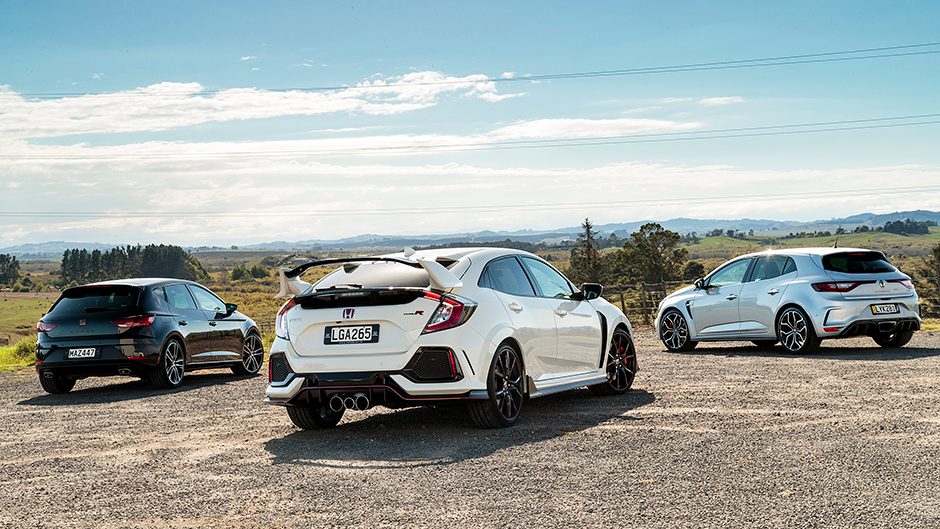
The combatants
These three aren’t strangers to our pages but are worth a quick recap to refresh the grey matter. The Civic Type R employs a 2.0-litre turbocharged four to deliver 228kW with 400Nm of torque. It’s only available with a six-speed manual, complete with an auto blipper to smooth the downshifts, and there’s a helical-type mechanical front diff. The Type R benefits from ‘dual axis’ Mac struts up front. Like those fitted to the Renault, the design helps separate the functions of bumping and steering. This results in a more stable front end geometry for improved grip and a reduction in torque steer. There are adaptive dampers and three drive modes, Sport the default along with Comfort and R modes. All up it costs $59,990.
The Seat Leon Cupra packs 221kW from its 2.0-litre four, and 380Nm. While available with a manual overseas, it’s only offered here with the twin-clutcher which now incorporates seven gears. Helping it stick the power is an electromechanical diff lock similar to that used in a Haldex type on-demand system. Here, however, the clutch packs are on either side of the transmission, the wheel speed sensors working out which one needs more stick and the system working to deliver the torque appropriately. It too has adaptive dampers, and various drive modes, including Cupra and Individual, letting you set your preferences. It goes for $57,990, while there are a few options to tick.
The Renault Megane RS employs just 1800cc to develop 205kW with a healthy serve of torque too at 390Nm. This silver beastie is packing the $1800 Cup pack with 10 per cent stiffer suspension and revised roll bars. It also brings a Torsen LSD to the party, and dual cast brakes with an alloy hub. While the others operate multilink rears, the Renualt sticks with the torsion beam but adds four-wheel steer, the rears turning either in the opposite direction to the fronts (to improve turn-in) or in the same direction (to improve stability). Like the others here, it has a quick steering rack with just over two turns between the stops. The dampers are passive but have ‘hydraulic bump stops’, the valving arranged to create additional damping forces near the top of the piston stroke which has the effect of minimising harsh impacts. As a six-speed manual, the RS costs $59,990, and there is a six-speed dual-clutch version for $62,990.
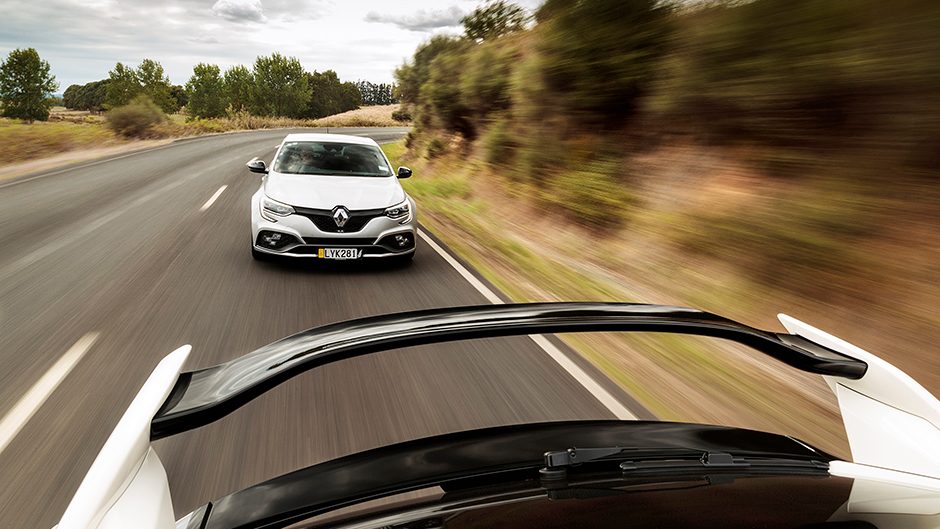
Looking lively
Seat’s Cupra looks the most innocuous, lying low on a set of 19s, and now wearing copper badging. You’re not left wondering about the Civic’s intent, the Type R with the biggest appendages, body holes and pumped up quarter panels. And the trio of angry pipes even outdoes the Megane’s XL-sized exhaust outlet. Pity you can’t hear much of the exhaust noise on road. The Megane then strikes a likeable balance between subtlety and aggression with its flared guards corralling the wider track, and the F1-inspired front end with its chequered flag-style driving lights.
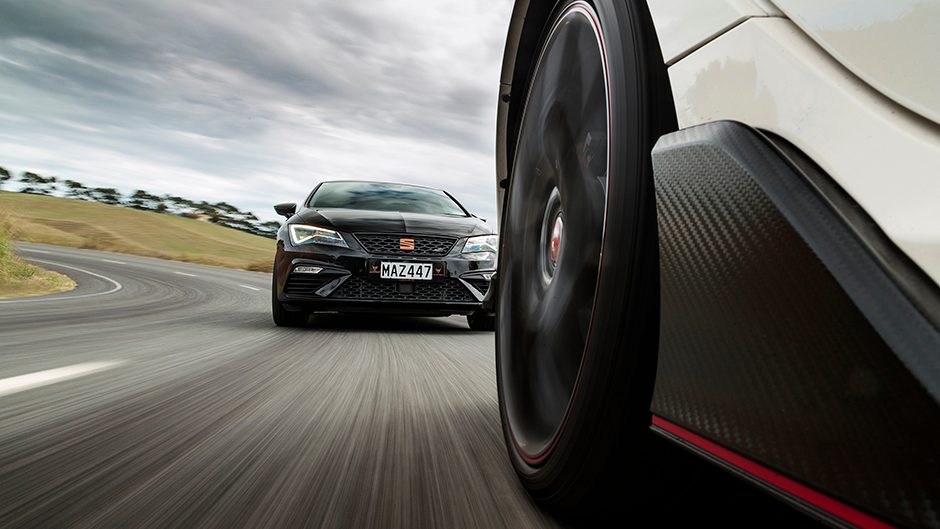
Living fast
Firing off the mark usually requires more traction than a powerful front driver can muster, but this trio manages to make most of their sinew stick. The Cupra is comfortably the quickest from a standstill, its twin clutch allowing a few launch revs before releasing the brake. We found about 2500rpm was good enough on the day for a 5.6sec 0-100km/h run, well under the claim of 6.0sec. The manuals are downright tricky to coax quickly off the mark, usually with an excess of wheelspin.
The Honda does it just under the six-second mark, the Megane just over. Once up and cranking, it’s the Honda that’s the boss here; it really is quite rapid. Its lower overall gearing helps, as does an engine that feels stronger than its quoted outputs suggest. It hauls seriously from 3000rpm and isn’t interested in relenting until the limiter intervenes at just past 7000rpm. Seat’s Cupra is pretty quick too, it’s 2.0-litre on the case by the mid 2000s but the will doesn’t quite hang around right through the rev range. The Megane’s engine will pull well from 2500rpm too, and can spin when needed, but lacks outright horses in this company.
The only disappointing feature of the Honda’s engine is the noise, or lack thereof, most of the mechanical melody drowned out by the roar of rubber, the exhaust basically mute. The Cupra manages the least tyre noise, and the best engine tune, even if it’s all augmented. Civic also deals the others a master class in chassis agility through the bends. It runs an unapologetic sport suspension set-up that has you feeling the road beneath but the control of both the 20-inch wheels and the body movements is impeccable.
It’s hard to nudge the nose wide in tight turning and it’s simply locked tight through faster arcs. This possesses an unnaturally good balance for a front driver. The steering has a heft to its action but the assistance has been perfected and the messages are crystalline. Its diff sorts the traction out of the tight bends while there’s little torque steer to mention, nor much interest in tramlining. Brakes are suitably talented too. The only downer is you can’t dial up the R powertrain response and Sport suspension; the R damping mode is simply too stiff for the road.
While the Renault can’t match the pace of the Civic, it can go toe to toe in the bends. The stiffer Cup set-up doesn’t spoil the Megane RS experience on-road, it makes it better as the Torsen diff really puts everything the RS has to the ground. There is a little more tugging at the wheel with the Cup compared with the Civic, as it can be distracted by the contours of a road, but it’s easy enough to keep tracking straight.
The Megane is surprisingly good over the bumps given its torsion beam rear, though not as anchored as the Type R, and you can detect the effect of those rear wheels on the turn, helping tighten the line. The steering is nicely interactive, though lacks the neutral feeling of the Civic just off centre and in its return. Its gear shift can be rushed through the gate, but lacks the oiled fluency of the Honda’s with a few more notches to its movement. Brakes are good though, solidly reassuring in both bite and pedal.
So is the Seat out done here then? Sort of, but not completely. It’s just not as lively as the Megane or as competent as the Type R. The Haldex-style diff delivers on its promise, laying the power down nicely out of bends and the Cupra is virtually free of torque steer. Suspension can be run hard in Cupra mode without much worry for the bumps, and this gives the steering more meat to the action, though it relays the weakest link from the wheels.
With the rapid shifting twin clutch taking care of the gears, you can concentrate on getting those corner entry points right, for it can’t hold the same load in the bend as the others. For the photos we used a gnarly corner that turns back on itself, one that really works the treads. The Honda emitted a mere squeak from the front as it rounded the corner at the legal limit. The RS came close to emulating that velocity but was beginning to inch closer to the shoulder line while the Cupra was 15km/h slower, having to ease off the gas to keep it safely from crossing the line.
But easy living?
If you put any credence in the door slam test, the Seat gives the best cur-thunk, followed closely by the Renault, whereas the Honda can seem ‘tinny’.
And its interior feels more ‘plasticity’ than those of the others. Both the Seat and Renault are better in places yet also have a few cheap spots. Yet there’s nothing to fault with the build of the Civic, or its practicality. It has the largest boot, and realises the most load space when the seats are folded. While they are all about the same for width, the Megane has the least depth and height. The Cupra gets a space saver, the others a can of hope-this-plugs-the-hole goo.
There’s a smidge more space in the rear seat of the Civic too but only two seatbelts. The Renault’s front seats eat into the rear leg room, but all three will carry four in relative comfort. The Seat has the best infotainment; simple, intuitive and quick. All will mate with a smartphone, and that’s the best way to live with the Honda system, which lacks sat nav.
Matching the exterior, the Type R has the raciest front seats which, like the Megane’s, have plenty of bolstering but aren’t as comfortable. The Seat’s are tame by comparison, but the plushest too. On the ride quality front, the two with the variable dampers do it better. The Cupra is the least aggressive, it’s Comfort and Sport settings most refined in this company. And with the ability to configure an Individual mode, the Seat can have the racier driveline settings with a cushy suspension set if that’s how you like it.
That said, Sport is perfectly okay in the burbs for a hot hatch. The Civic’s default Sport mode is too, though firmer in the springs while Comfort adds the cush when required. The Renault, on fixed rate suspension, has the sportiest ride in town, but the dampers with their ‘hydraulic bump stops’ do well to take the sting out of big bumps, particularly speed humps.
They all perform in a civil manner at urban speeds, with plenty of pull from idle for town work. The Cupra’s twin-clutch and active cruise with stop-and-go function make short work of traffic, whereas the active cruise in the manual cars only works to 50km/h in the Megane (though that’s also true of the auto version) and to about 30km/h in the Civic. Each has a well defined bite to the clutch, and with torque to burn, you skip shift through to fifth where they both mooch along happily at 50km/h with 1500rpm on the dial.
For consumption, the Seat was slightly better, in the 8L/100km zone around town, the others in the 9/10s. All do about 6L/100km for motorway cruising and when on it, rise into the mid-teens. The Megane’s turning circle is tight with rear steering, the Civic’s the widest, but not awful either.
Each to their own
In most ways the Seat is the easiest to live with; discreetly styled and plenty rapid with auto convenience. It handles itself well too. However it doesn’t register enough emotional appeal either visually or at the wheel to win this one, but it’s good value at the price.
The Honda is engineered to win these contests with ruthless precision and blistering speed. It’s also easy to live with if you like manual gearboxes and don’t have to share the car with anyone who doesn’t. The race car look might put off others.
The Renault will find favour on its looks, and availability of an auto, which is a good one too. It’s not as clinical as the Type R, it’s got a few chassis traits that add character, but it’s the Civic that nudges it in the end, even with that big spoiler.
| Model | Honda Civic Type R | Price | $62,990 |
| Engine | 1996cc, IL4, T/DI, 228kW/400Nm | Drivetrain | 6-speed manual, front-wheel drive |
| Fuel Use | 8.8L/100km | C02 Output | 202g/km |
| 0-100km/h | 5.95sec | Weight | 1399kg |
| Model | Renault Megane RS Cup | Price | $61,790 |
| Engine | 1798cc, IL4, T/DI, 205kW/390Nm | Drivetrain | 6-speed manual, front-wheel drive |
| Fuel Use | 7.4L/100km | C02 Output | 168g/km |
| 0-100km/h | 6.23sec | Weight | 1426kg |
| Model | Seat Leon Cupra | Price | $57,990 |
| Engine | 1984cc, IL4, T/DI, 213kW/380Nm | Drivetrain | 7-speed twin-clutch, front-wheel drive |
| Fuel Use | 6.7L/100km | C02 Output | 152g/km |
| 0-100km/h | 5.61sec | Weight | 1412kg |


